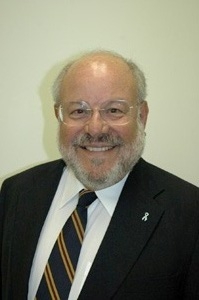A demonstration that in space as on Earth solar power is an alternative to dangerous nuclear power is to come this week when a solar-powered spacecraft called Rosetta will rendezvous with a comet at 375 million miles from the Sun.
The Rosetta space probe, energized with solar power, is to meet up Wednesday with Comet 67P/Churyumov-Gerasimenko. It will begin making observations, relaying back to Earth high-resolution images and information from its sensors, of the two-and-a-half mile wide comet Rosetta will subsequently send a lander down to the comet that will drill into it and perform a variety of experiments. For a year, Rosetta will fly alongside the comet, named after the two Ukranian astronomers who discovered it in 1969.
For decades, the United States and the Soviet Union, and now Russia, stressed the use of atomic energy as a source of power in space--and there have been accidents as a result.
The most serious were the falls back to Earth of a U.S. satellite with a SNAP-9A plutonium-238 radioisotope thermal generator on board in 1964, disintegrating as it fell, dispersing plutonium worldwide, and of the Soviet Cosmos Satellite 954 in 1978, with an atomic reactor on board, also breaking up, and spreading nuclear debris for hundreds of miles across the Northwest Territories of Canada.
The late Dr. John Gofman, professor of medical physics at the University of California at Berkeley, long connected the SNAP-9A accident and its dispersal of plutonium with a global increase in lung cancer. Canada demanded compensation for the Cosmos-954 accident which the Soviet Union eventually paid, in part.
Now all satellites are solar-powered as is the International Space Station. But there has been a push to continue to use nuclear power on space probes with NASA and formerly Soviet and now Russian space authorities insisting that solar power cannot be harvested far from the Sun.
However, the European Space Agency declares on its website--http://www.esa.int/Our_Activities/Space_Science/Rosetta/Frequently_asked_questions
--"The solar cells in Rosetta's solar panels are based on a completely new technology, so-called Low-intensity Low Temperature Cells. Thanks to them, Rosetta is the first space mission to journey beyond the main asteroid belt relying solely on solar cells for power generation. Previous deep-space missions used nuclear RTGs, radioisotope thermal generators. The new solar cells allow Rosetta to operate over 800 million kilometres from the Sun, where levels of sunlight are only 4% those on Earth. The technology will be available for future deep-space, such as ESA's upcoming Jupiter Icy Moons Explorer."
ESA notes: "ESA has not developed RTG i.e. nuclear technology, so the agency decided to develop solar cells that could fill the same function."
Rosetta, launched in 2004, "relies entirely on the energy provided by its innovative solar panels for all onboard instruments and subsystems," says ESA.
NASA has begun to follow ESA's lead. It went with solar power for its Juno mission to Jupiter that is now underway. Launched in 2011, energized by solar power, the Juno space probe is to arrive at Jupiter in 2016.
At the distance at which Rosetta will encounter Comet 67P/Churyumov-Gerasimenko or at which Juno will be doing experiments involving Jupiter or ESA's Jupiter Icy Moons Explorer will work, energy from the Sun is but a small fraction of what it is on Earth. Still, it can be effectively utilized. (NASA's last space probe mission to Jupiter, Galileo, launched in 1989, was plutonium-powered and NASA officials insisted, including in sworn testimony countering a challenge to Galileo in federal court, that this was the only energy choice. There were numerous protests against Galileo and have been to subsequent nuclear space shots led by the Global Network Against Weapons & Nuclear Power in Space (www.space4peace.org).
Rosetta is named after the Rosetta Stone, a slab of basalt found in Egypt in 1799 with inscriptions carved on it that enabled the deciphering of hieroglyphics, the ancient language of Egypt. "As a result of this breakthrough, scholars were able to piece together the history of a lost culture," notes ESA.
Likewise, "Rosetta's prime objective is to help understand the origin and evolution of the Solar System," says ESA. "The comet's composition reflects the composition of the pre-solar nebula out of which the Sun and the planets of the Solar System formed, more than 4.6 billion years ago. Therefore, an in-depth analysis of Comet 67P/Churyumov-Gerasimenko by Rosetta and its lander will provide essential information to understand how the Solar System formed."
ESA adds, "There is convincing evidence that comets played a key role in the evolution of the planets, because cometary impacts are known to have been much more common in the early Solar System than today. Comets, for example, probably brought much of the water in today's ocean. They could even have provided the complex organic molecules that may have played a crucial role in the evolution of life on Earth."
Rosetta "will be undertaking several 'firsts' in space exploration," says ESA. "It will be the first mission to orbit and land on a comet." And, Rosetta will be "the first spacecraft to witness, at close proximity" the changes in a comet as it approaches the Sun. Rosetta's lander "will obtain the first images from a comet's surface and make the first in-situ subsurface analysis of its composition."
(Note: You can view every article as one long page if you sign up as an Advocate Member, or higher).





